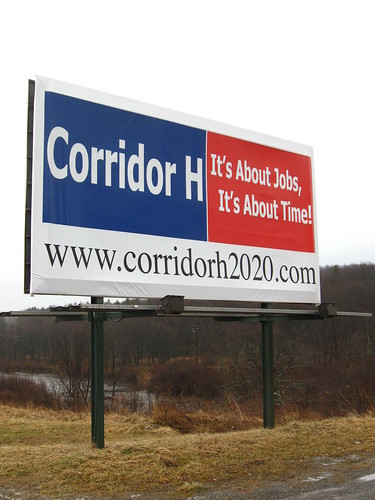
Volume XIX, Issue II: The Gospel Dignifies the Work of Craftsmen
The Gospel Dignifies the Work of Craftsmen
Let thy work appear unto thy servants, and thy glory unto their children. And let the beauty of the Lord our God be upon us: and establish thou the work of our hands upon us; yea, the work of our hands establish thou it..” – PSALM 90:16-17

This is Sir John Everett Millais's first important religious subject, showing a scene from the boyhood of Christ. When it was exhibited at the Royal Academy in 1850 it was given no title, but accompanied by a biblical quotation: 'And one shall say unto him, What are those wounds in thine hands? Then he shall answer, Those with which I was wounded in the house of my friends.' (Zech. 13:6)
Christian symbolism figures prominently in the picture. The carpenter's triangle on the wall, above Christ's head, symbolises the Holy Trinity. The wood and nails prefigure the crucifixion, as does the blood on the young Christ's hand, which he has cut on a nail, and which drips onto his foot. The young St John is shown fetching a bowl of water with which to bathe the wound. This clearly identifies him as the Baptist, and the image is extended by the white dove perched on the ladder, symbol of the Holy Spirit, which descended from Heaven at the baptism of Christ.
Following the Pre-Raphaelite credo of truth to nature, Millais painted the scene in meticulous detail and based the setting on a real carpenter's shop in Oxford Street. The sheep in the background, intended to represent the Christian flock, were drawn from two sheep's heads obtained from a local butcher. He avoided using professional models, and relied instead on friends and family. Joseph's head was a portrait of Millais's own father, but the body was based on a real carpenter, with his rough hands, sinewy arms and prominent veins. The Virgin Mary was his sister-in-law Mary Hodgkinson, who also appears in Millais's Isabella (1848-9, Walker Art Gallery, Liverpool); John the Baptist was posed by a young adopted cousin, Edwin Everett; and Nöel Humphreys, the son of an artist friend, sat for the young Christ.
The public reaction to the picture was one of horror and Millais was viciously attacked by the press. The Times described the painting as 'revolting' and objected to the way in which the artist had dared to depict the Holy Family as ordinary, lowly people in a humble carpenter's shop 'with no conceivable omission of misery, of dirt, of even disease, all finished with the same loathsome minuteness'. Charles Dickens was one of the most vehement critics, describing the young Christ as 'a hideous, wry-necked, blubbering, red-headed boy, in a bed gown' (Household Words, 15 June 1850).
Further reading:
Leslie Parris (ed.), The Pre-Raphaelites, exhibition catalogue, Tate Gallery, London 1984, reprinted 1994, pp.77-79, reproduced p.79, in colour. Elizabeth Prettjohn, The Art of the Pre-Raphaelites, London 2000, pp.189-91, reproduced pp.46-7, in colour. Malcolm Warner, The Victorians - British Painting 1837-1901, exhibition catalogue, National Gallery of Art, Washington, 1997, pp.65-66, reproduced pl.17, in colour.
Frances Fowle
December 2000, Tate Modern
The Chosen, Real Life with Jesus
[click to read]

The Chosen takes the accounts of the Gospels and vividly brings them to life. It looks and sounds like 1st Century Israel. It doesn’t stop there, though. It is so well done that it feels like it takes us, the viewers, back in time. It feels like we are there with the disciples watching the works of Jesus play out before our eyes. I cried as I watched the healing of Mary Magdalene. I laughed as Jesus playfully interacts with children, and the disciples begin to learn their calling. I wanted to shout “Hallelujah” as Jesus heals His first of many lepers. I felt like I was there for each of these events and more from the Gospels. Jesus is so much more than a preacher or solemn man of God. He is fully God and fully man and this comes through each episode. (read more)

Factory stacks in Waynesboro, Virginia. Photo by Bob Kirchman.
Something to Think About
[click to read]
Hate Didn’t Elect Donald Trump; People Did
By Victoria Sanders
Over the summer, my little sister had a soccer tournament at Bloomsburg University, located in central Pennsylvania. The drive there was about three hours and many of the towns we drove through shocked me. The conditions of these towns were terrible. Houses were falling apart. Bars and restaurants were boarded up. Scrap metal was thrown across front lawns. White, plastic lawn chairs were out on the drooping front porches. There were no malls. No outlets. Most of these small towns did not have a Walmart, only a dollar store and a few run down thrift stores. In almost every town, there was an abandoned factory.
My father, who was driving the car, turned to me and pointed out a Trump sign stuck in a front yard, surrounded by weeds and dead grass. “This is Trump country, Tori,” He said. “These people are desperate, trapped for life in these small towns with no escape. These people are the ones voting for Trump.”
My father understood Trump’s key to success, even though it would leave the media and half of America baffled and terrified on November 9th.
My father understood Trump’s key to success, even though it would leave the media and half of America baffled and terrified on November 9th. Trump’s presidency has sparked nationwide outrage, disbelief and fear.
And, while I commend the passion many of my fellow millennials feels towards minorities and the fervency they oppose the rhetoric they find dangerous, I do find many of their fears unfounded. I don’t find their fears unfounded because I negate the potency of racism. Or the potency of oppression. Or the potency of hate.
I find these fears unfounded because these people groups have an army fighting for them. This army is full of celebrities, politicians, billionaires, students, journalists and passionate activists. Trust me, minorities will be fine with an army like this defending them.
And, I would argue, that these minorities aren’t the only ones who need our help. The results of Tuesday night did not expose a red shout of racism but a red shout for help.
Journalists are now reporting that Trump won because rural America voted for him in droves. I see a lot of journalists reporting about the what, the who, and the how of this election, but not many are tackling the why. I do not at all feel qualified enough to discuss the why of this, but I don’t see anybody bringing up the astounding poverty found in rural America and that the desperation found in these areas is what prompted the rise of Donald Trump. Perhaps this will inspire more intelligent people than I to look into this more deeply.
It’s easy to point to these small, impoverished towns and name racism, the second amendment or plain stupidity as the only reasons why these people would ever vote for a man like Donald Trump. I find this to be highly intellectually dishonest, though. To write this off as simple racism is to ignore the very real and very heartbreaking struggles small town America faces.
The majority of rhetoric going around says that if you’re white, you have an inherent advantage in life. I would argue that, at least for the members of these small impoverished communities, their whiteness only harms them as it keeps their immense struggles out of the public eye.
Rural Americans suffer from a poverty rate that is 3 points higher than the poverty rate found in urban America. In Southern regions, like Appalachia, the poverty rate jumps to 8 points higher than those found in cities. One fifth of the children living in poverty live rural areas. The children in this “forgotten fifth” are more likely to live in extreme poverty and live in poverty longer than their urban counterparts. 57% of these children are white.
Education, particularly college, is less attainable to those living in rural areas. 64% of young people in rural areas attend college, compared to the 70% of students who attend universities in metro areas. 47% of these small town students who end up attending college only go for a two-year degree, while only 38% of urban students attain only a two-year degree. And, when these students do fight the odds and attend a university, they don’t come back to their place of origin due to the lack of jobs.
Rural Americans also suffer from a lower life expectancy. Those living in Appalachia regions, in particular, have a life expectancy that is declining at a rate that is worse than anywhere else in the USA. Those living in rural America are more likely to suffer from depression. Alcohol and substance abuse is prevalent in rural America and 25.9% of those entering rehab for addictions are between the ages of 12-17. The chronic pain that comes from vocations such as mining has caused the heroin epidemic sweeping small towns. (read more)

Corridor H, U. S. 48 through the mountains of West Virginia, promises to bring commerce and jobs to the region. Photo by Bob Kirchman.

A billboard between the towns of Thomas and Davis in West Virginia asks: "Got Faith?" Photo by Bob Kirchman.
My Brother's Livelihood Matters
[click to read]
The Current Crisis Requires an Outpouring of Love
The need is great, and looking for ways to help can be daunting. Angelique McNaughton, a regional representative of GoFundMe, has provided a list of Minneapolis businesses affected by the recent riots and/or loss of income due to the COVID-19 crisis. Use care in vetting them and feel free to pass it on across your social networks. “Little by little, a little becomes a lot.” – Tanzanian Proverb (click to help)
